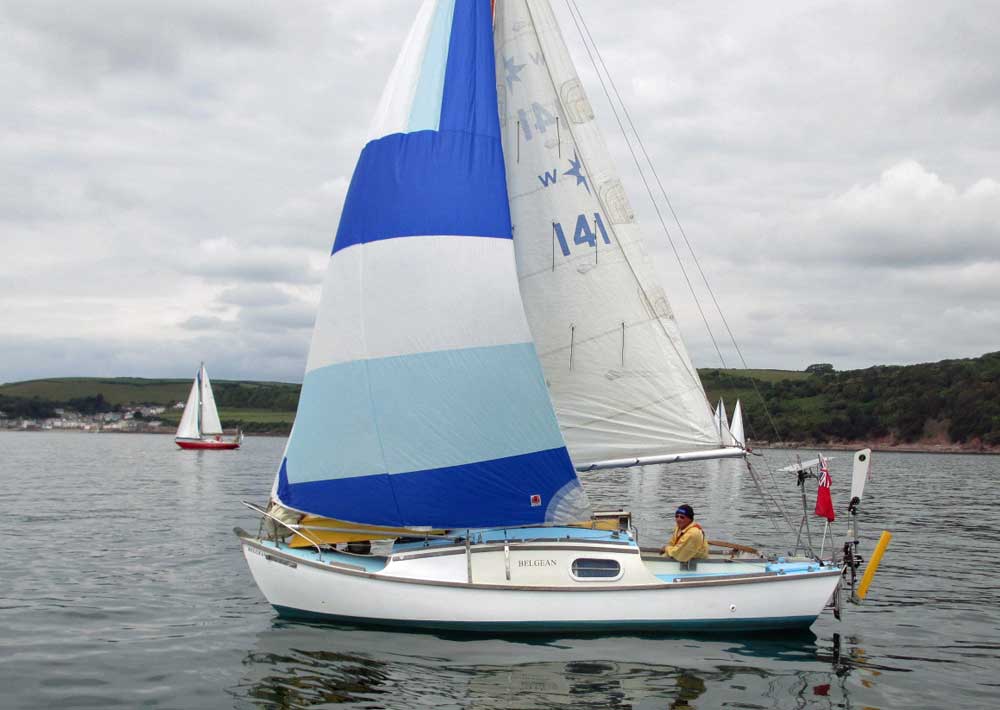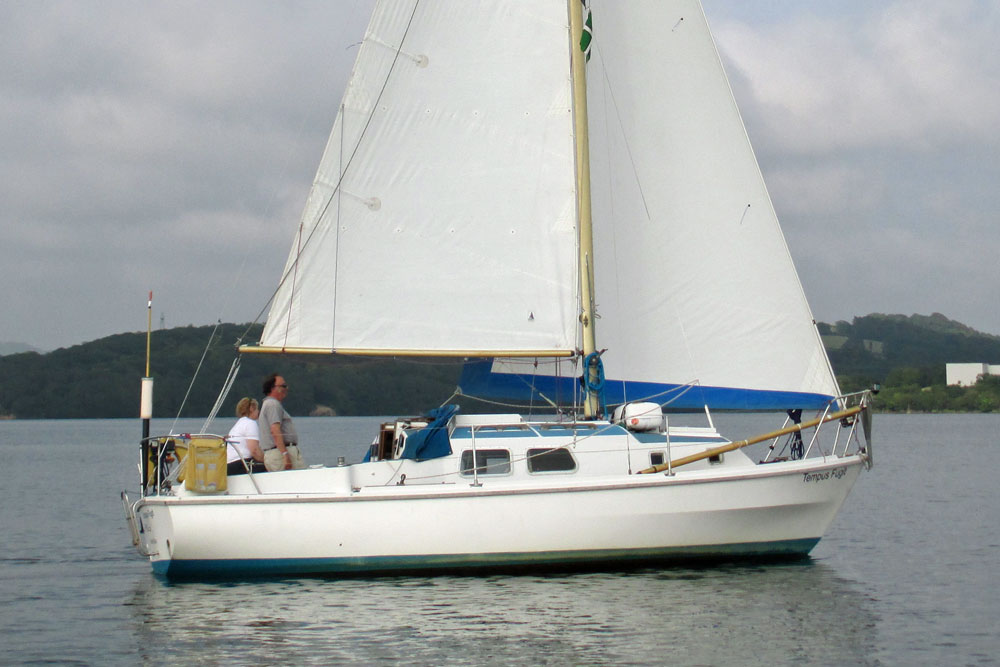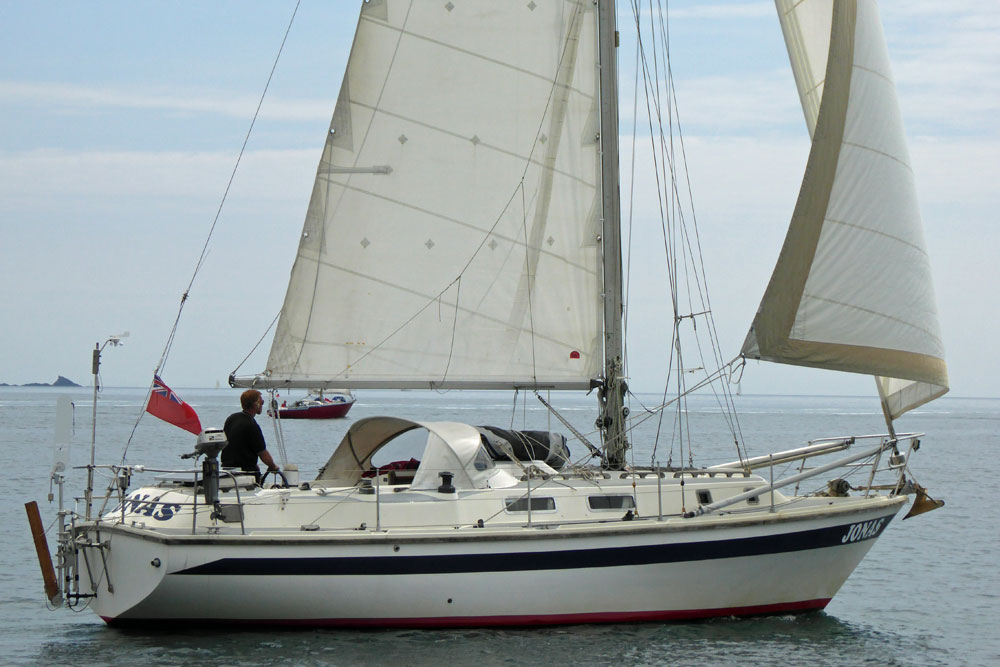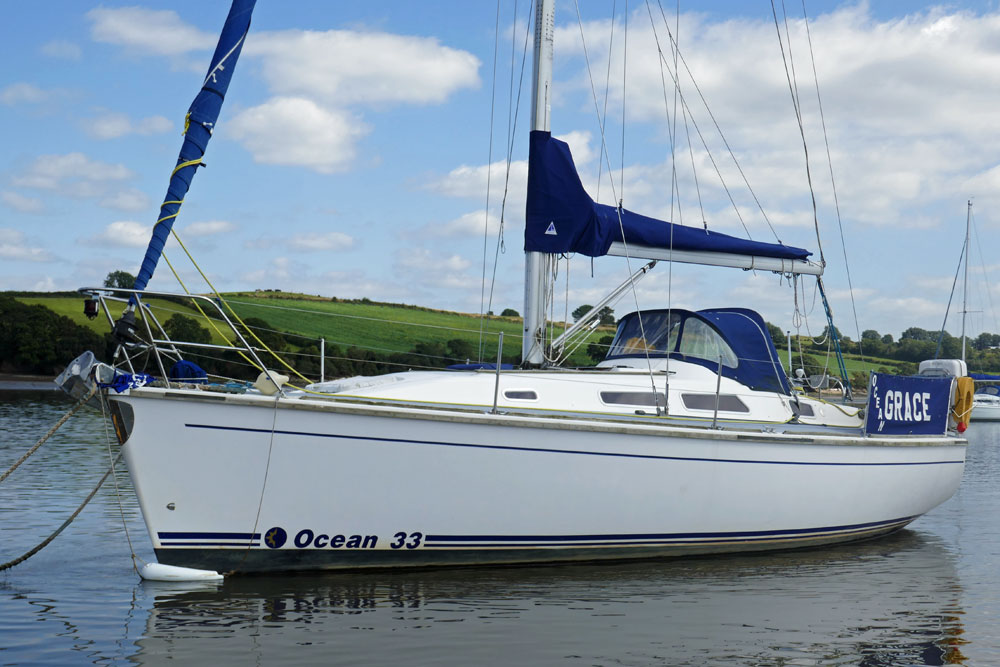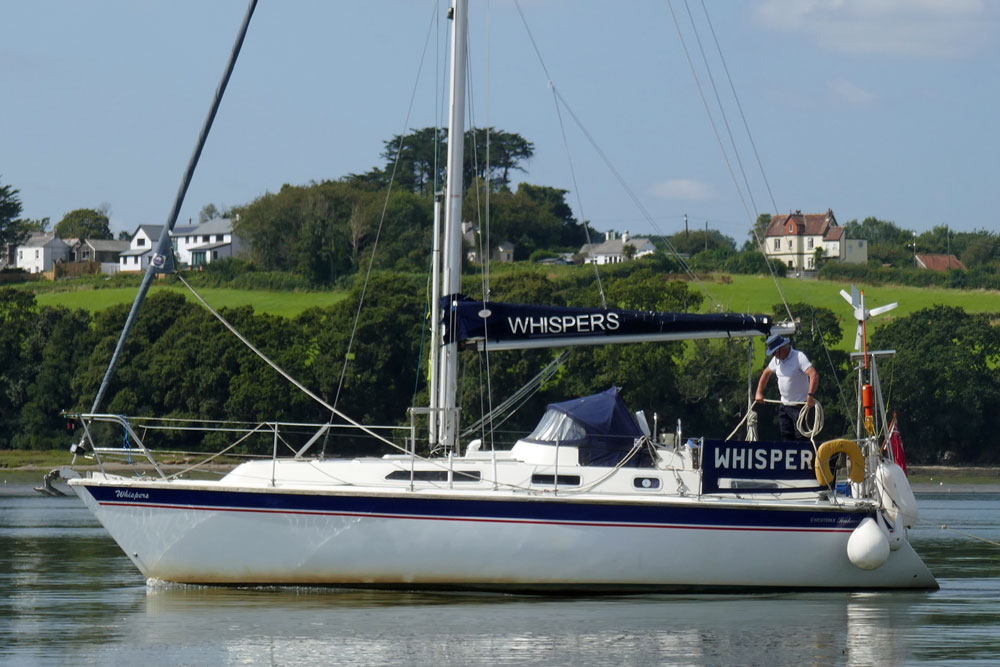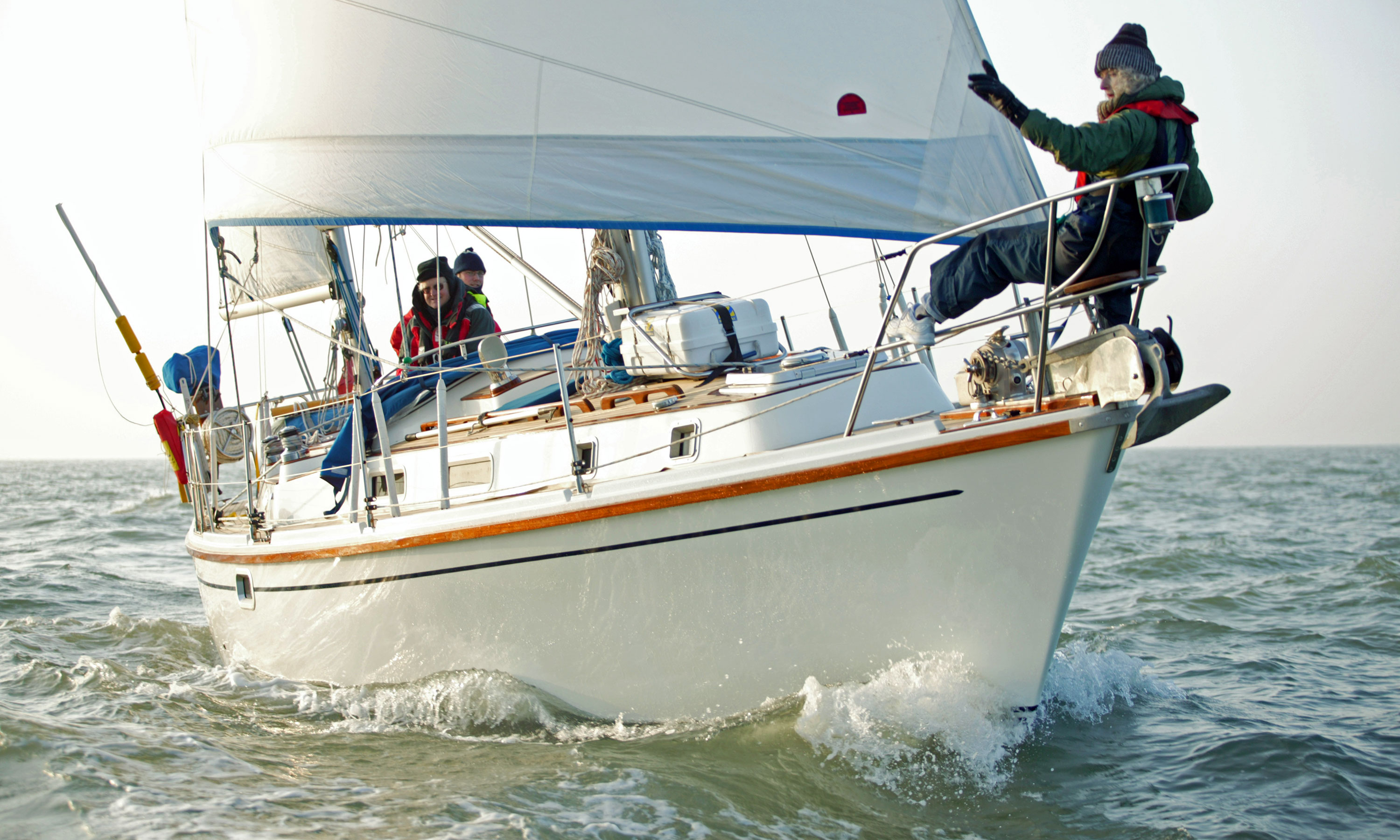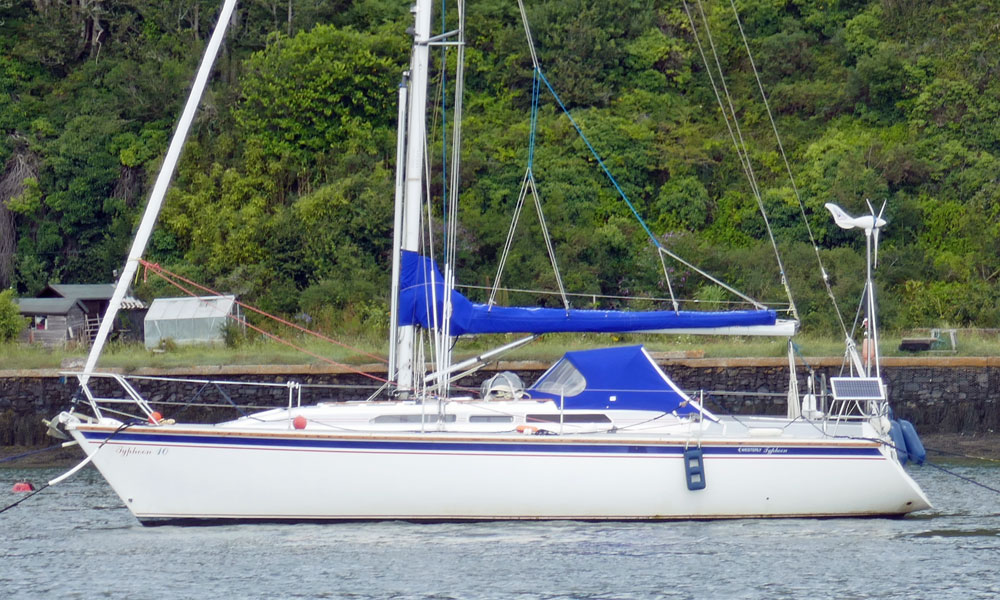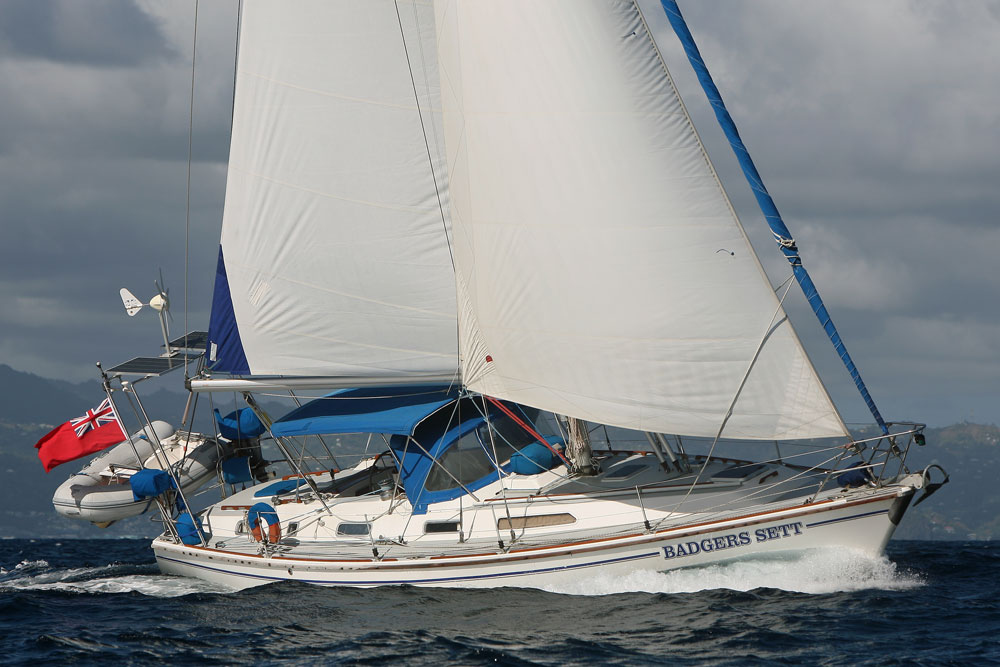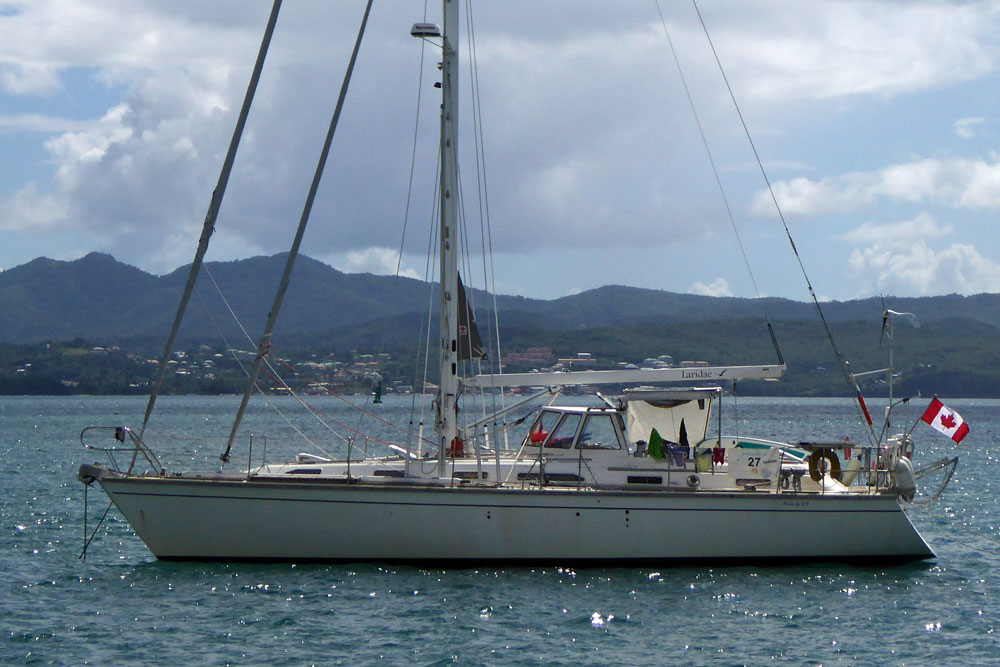- Home
- Cruising Yachts 30' to 35'
- Westerly Vulcan 34
The Westerly Vulcan 34 Sailboat
Specs & Key Performance Indicators
The Westerly Vulcan 34, a sloop-rigged motor-sailor was designed by Jack Laurent Giles and built in the UK by Westerly Marine Ltd.
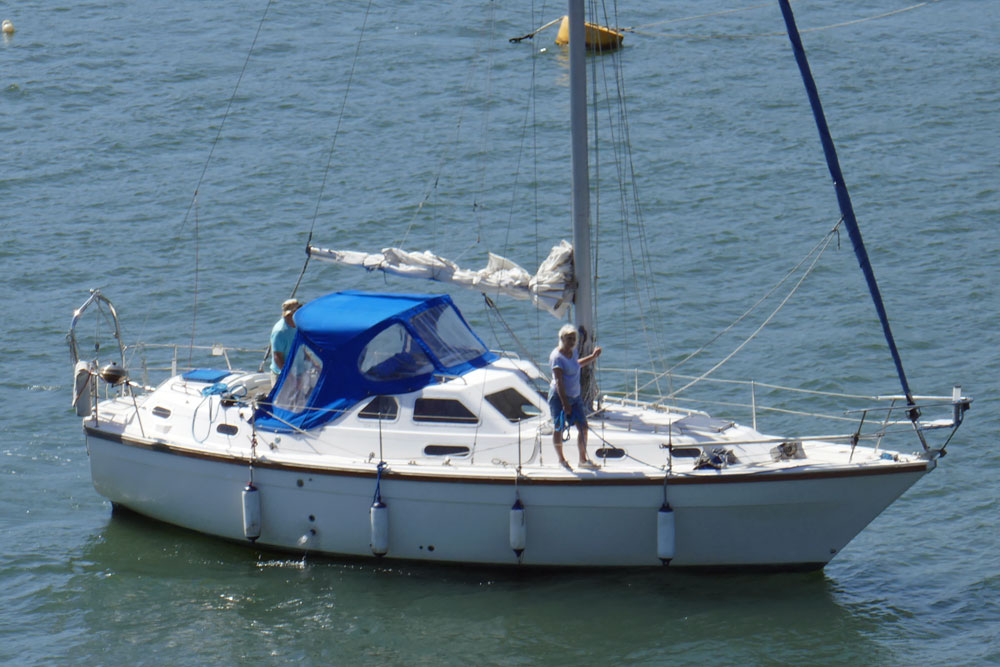
Published Specification for the Westerly Vulcan 34
Underwater Profile: Twin keels & skeg-hung rudder
Hull Material: GRP (Fibreglass)
Length Overall: 34'0" (10.4m)
Waterline Length: 28'5" (8.7m)
Beam: 11'9" (3.6m)
Draft: 4'3" (1.3m)
Rig Type: Masthead sloop
Displacement: 15,602lb (7,077kg)
Designer: Jack Laurent Giles
Builder: Westerly Marine Ltd. (UK)
Year First Built: 1980
Year Last Built: 1984
Number Built: 42
Published Design Ratios for the Westerly Vulcan 34
1. Sail Area/Displacement Ratio: 14.7
2. Ballast/Displacement Ratio: 44.7
3. Displacement/Length Ratio: 303
4. Comfort Ratio: 30.1
5. Capsize Screening Formula: 1.9
Summary Analysis of the Design Ratios for the Westerly Vulcan 34
1. A Sail Area/Displacement Ratio of 14.7 suggests that the Westerly Vulcan 34 will need a stiff breeze to get her going. In light conditions, unless you've got plenty of time on your hands, motor-sailing may be the way to go.
2. A Ballast/Displacement Ratio of 44.7 means that the Westerly Vulcan 34 will stand up well to her canvas in a blow, helping her to power through the waves.
3. A Displacement/Length Ratio of 303, tells us the Westerly Vulcan 34 is clearly a heavy displacement cruising boat. You can load her down with all your cruising gear and equipment and it will hardly affect her waterline. Not an ideal choice for coastal sailing, but she'll come into her own on an offshore passage in testing conditions.
4. Ted Brewer's Comfort Ratio of 30.1 suggests that crew comfort of a Westerly Vulcan 34 in a seaway is similar to what you would associate with the motion of a moderate bluewater cruising boat - a predictable and acceptable motion for most seasoned sailors.
5. The Capsize Screening Formula (CSF) of 1.9 indicates that a Westerly Vulcan 34 would be a safer choice of sailboat for an ocean passage than one with a CSF of more than 2.0.
More about the Westerly Vulcan...
The Westerly Vulcan is a powerful and sturdy boat, with a displacement of over 15,000 lbs and a ballast of almost 7,000 lbs. It has a sloop rig with a masthead genoa and a mainsail with slab reefing. The sail area is about 600 sq ft, which gives the boat a moderate sail performance, but enough to keep it moving in light winds. The boat also has a reliable diesel engine, either a Volvo of 45 or 60 hp, or a Lombardini of 45 hp, depending on the model. The engine is located under the saloon floor, with excellent access from all sides. The boat is steered by a single wheel in the cockpit, or by a hydraulic wheel in the deck saloon.
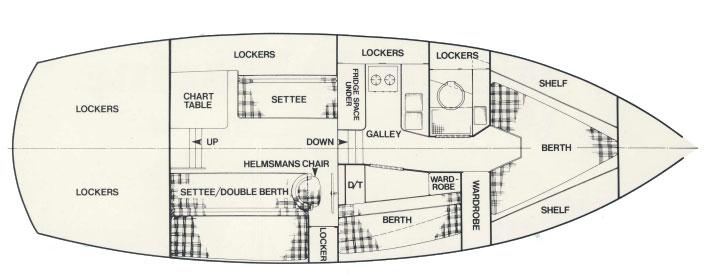 Westerly Vulcan Accommodation Layout
Westerly Vulcan Accommodation LayoutAccommodation
The Westerly Vulcan has a very spacious and comfortable interior, with up to seven berths in three separate cabins plus the saloon. The layout is as follows:
- Forward cabin with a V-berth that can be converted into a double berth, with storage lockers and shelves.
- Heads compartment to port, with a marine toilet, sink and shower.
- Double cabin to starboard, with a narrow double berth that extends under the saloon settee, and a hanging locker.
- Deck saloon with an L-shaped settee and table to port, which can be lowered to form another double berth. To starboard, there is an interior steering position with instruments and controls, and another settee that can be used as a single berth.
- Galley to port, aft of the saloon settee, with a two-burner stove with oven and grill, a sink with hot and cold water, and ample storage space.
- Navigation station to starboard, aft of the interior wheel, with a chart table and swing-out seat. Behind the seat, there is a single passage berth that leads to the aft storage locker.
- Aft storage locker under the cockpit, accessible from the passage berth or from the cockpit hatch. This locker is very large and can store sails, tools, spare parts, or even a portable generator.
The interior of the Westerly Vulcan is well-lit and ventilated by several windows and hatches. The deck saloon offers panoramic views of the surroundings and allows the crew to stay warm and dry while sailing or at anchor. The woodwork is of high quality and gives the boat a cozy and traditional feel.
Hull and Deck
The hull of the Westerly Vulcan is made of solid fiberglass with no core material. It has a moderate freeboard and a flared bow that helps to keep the boat dry in choppy seas. The deck is also made of fiberglass with balsa core for stiffness. It has molded non-skid surfaces and wide side decks for easy movement. The cockpit is large and deep, with high coamings for protection. It has two large lockers for storage and an opening hatch to access the aft locker. The cockpit also has an emergency tiller that can be fitted to the rudder stock if needed.
The deck saloon is the most distinctive feature of the Westerly Vulcan. It has a curved windshield and sliding windows on both sides. It also has two hatches on the roof for ventilation. The deck saloon provides excellent visibility and shelter for the crew, as well as an alternative steering position.
The boat also has a powerful engine that can push it along at 6 knots in calm conditions or against the current. The boat has a fuel tank of 40 gallons and a water tank of 60 gallons, which give it a good range and autonomy.
This article was written with the assistance of Gemini, a large language model developed by Google. Gemini was used to gather information, summarize research findings, and provide suggestions for the content and structure of the article.
Other sailboats in the Westerly range include:
Recent Articles
-
Passoa 47 Sailboat Review: Comprehensive Specs & Performance Analysis
Jan 04, 26 04:57 AM
Discover the Passoa 47, a legendary aluminium blue water cruiser by Garcia. Explore technical specifications, design ratios, and why its lifting keel is a game-changer for offshore sailors. -
Sailboat Wheel Steering Maintenance & Inspection Checklist
Dec 30, 25 02:32 PM
Keep your vessel’s helm responsive and reliable with our expert maintenance checklist. Master cable tensioning and system inspections to avoid mid-passage failures. -
Modern Boat Electronics and the Latest Marine Instruments
Dec 20, 25 05:27 PM
Should sailboat instruments be linked to the latest boat electronics as a fully integrated system, or is it best to leave them as independent units?

